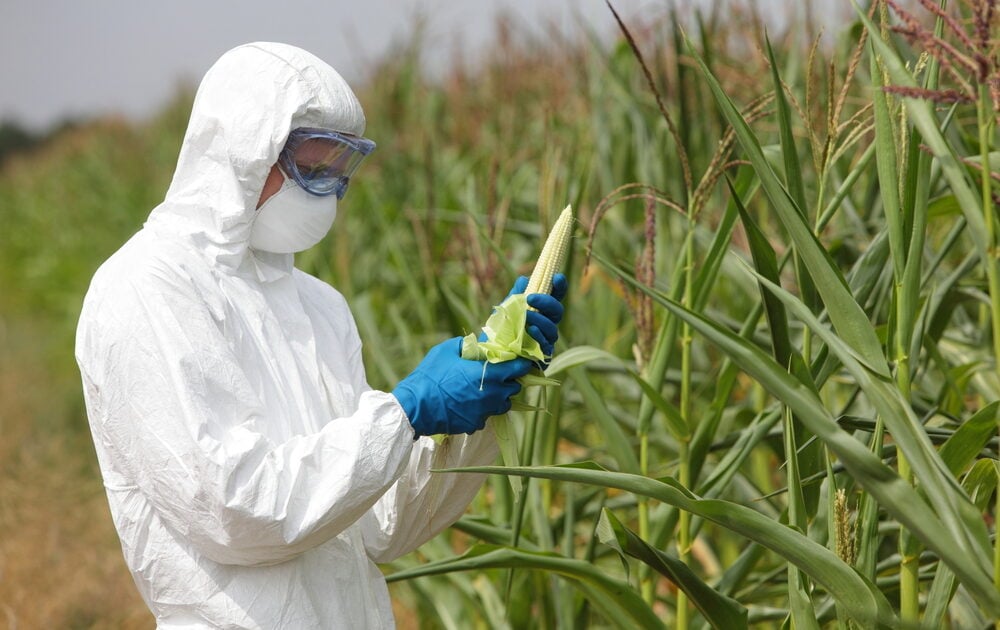What’s the Biggest Issue With GMOs? (Hint: It’s Not Exactly Labeling)

Genetically modified foods (GMOs) are a hot-button issue in the U.S. and around the world.
While more than 60 countries have bans or labeling restrictions on GMO crops, no such regulations exist in the U.S. market. Government regulatory bodies say GMOs are virtually identical to their conventional counterparts and that, at least for now, the crops don’t warrant any consumer warning or safety labels. Consumers are left in the dark about GMOs in their food, save for the few brands that have taken steps to become Non-GMO verified—a third party certification offered by the Non-GMO Project.
The most common GMO crops include soy, corn, canola, sugar beets, alfalfa (for livestock) and cotton. The numbers in the U.S. are staggering—more than 90 percent of most of these crops grown in the U.S. are now grown from genetically modified seeds.
Consumer health advocacy groups warn that GMOs may pose significant human health risks. Environmental groups warn about the dangers to the environment. But what’s the real threat from GMOs?
While the jury is still out on the science of taking genes from one (animal or plant) species and injecting them into another, there’s overwhelming evidence that the companion herbicides and pesticides used alongside GMOs pose significant health effects for humans and the planet.
Celebrity scientist Neil DeGrasse Tyson made headlines last year when he said that, at its core, biotechnology isn’t a dangerous practice and has long been an agricultural practice employed by humans. He likened GMOs to plant breeding and hybridization, which the technology certainly resembles. Still, the practice of taking genes from one species and forcefully adding them to another isn’t quite as natural as grafting and cross-pollinating plants. You certainly can’t do it in your backyard (unless you have a state-of-the-art lab back there). But that doesn’t mean it’s a technology we should fear.
In fact, some scientists are successfully creating GMO bacteria, which are being used in a number of different capacities, such as fighting obesity. Bacteria, grown in labs, have no need for herbicides or pesticides. But take a GMO crop like corn or soy that’s specifically designed to resist heavy applications of an herbicide (like Monsanto’s best-selling glyphosate-based Roundup), and the ramifications become a lot more complicated and dangerous—and not just for the farmers in the field or the humans eating the heavily sprayed GMO foods. The herbicide has also been identified as a culprit in the steady decline of monarch butterflies, important pollinators in North America. Monarch caterpillars exclusively eat the milkweed plant, which is considered a weed and targeted by corn and soy farmers who use Monsanto’s Roundup.
But the human consequences are also significant, and research continues to surface pointing to the risks of herbicide and pesticide exposure. Earlier this week, France announced it was banning Monsanto’s Roundup from being sold at home garden centers in the country for its recent classification by the United Nations as a probable carcinogen. Russian scientists called for a ten-year ban on GMOs until research can prove their safety. Herbicides like glyphosate have also been identified as endocrine disruptors, which can alter the metabolic function in humans and can lead to weight and hormone issues.
The recent growth of GMOs designed to resist herbicides have directly led to a massive increase in these chemicals in the U.S. over the past several decades. According to a study published in the journal Environmental Sciences Europe, the use of herbicides in the U.S. has increased by nearly 530 million pounds between 1996 and 2011, with overall pesticide use increasing by seven percent.
Whether or not the U.S. will move to embrace GMO labeling is still yet to be seen. Informing consumers about what’s in their food though certainly gives them more power in making informed purchases; and that’s likely to lead to a decrease in sales of GMOs, and hopefully, an increase in sales of Non-GMO verified and certified organic foods. The more of those we buy, the more the demand for herbicide- and pesticide-doused GMOs decreases.
Find Jill on Twitter and Instagram
Related on Organic Authority
Monsanto Claims Sabotage as Oregon Becomes A War Zone for GMOs
Maine Says No to GMOs, Bill Passes Through Senate
Human Health or Environment: Is There a Bigger Risk from GMOs?
GMO corn image via Shutterstock

